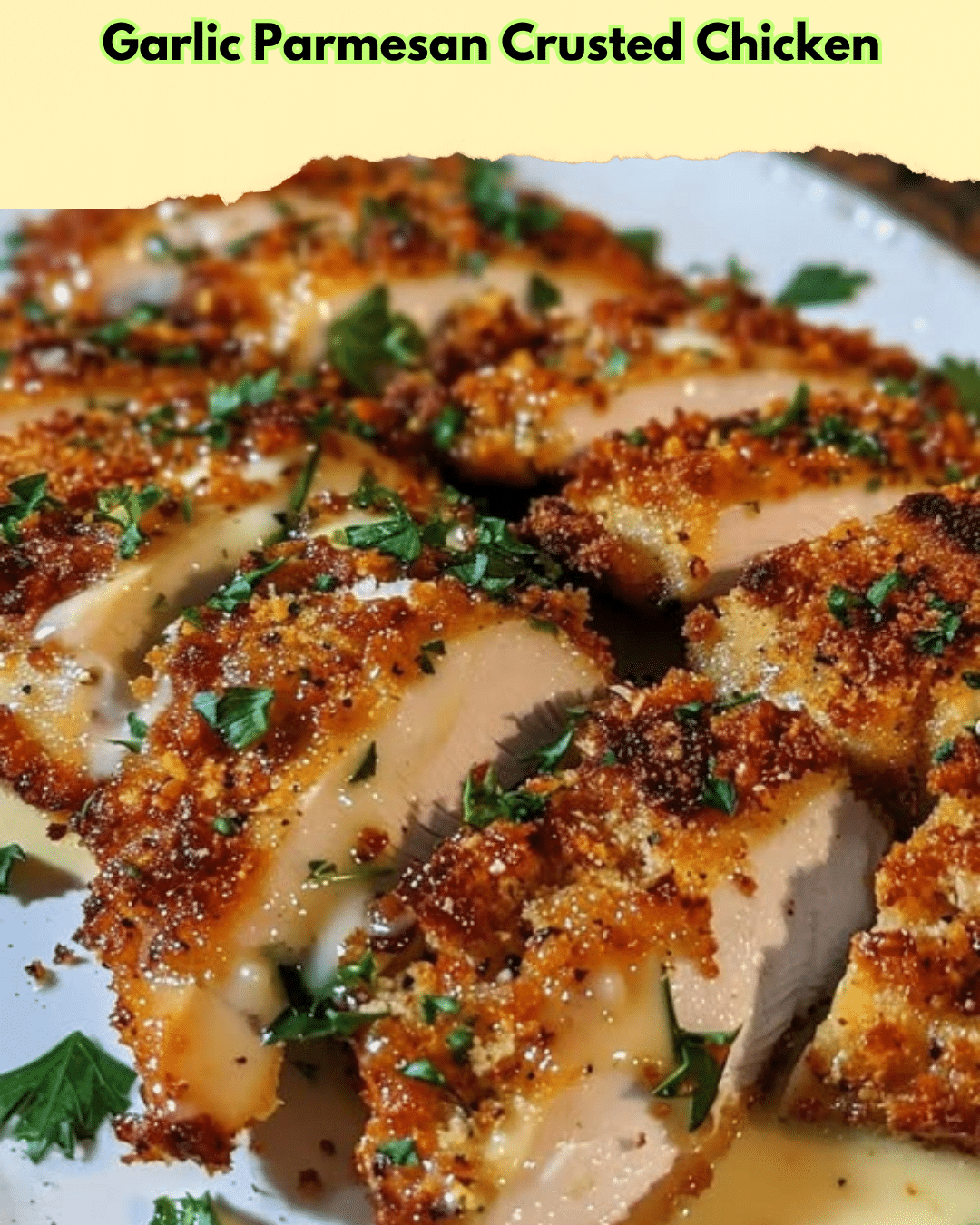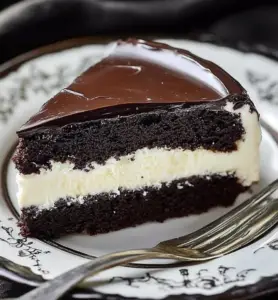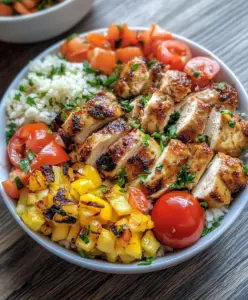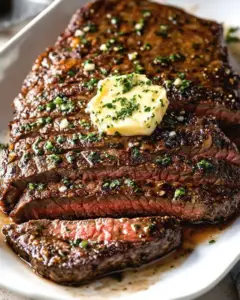Garlic Parmesan Crusted Chicken: A Deliciously Crunchy Delight
If you’re on the hunt for a dish that combines cheesy goodness with a crispy crust, look no further than Garlic Parmesan Crusted Chicken. This delightful recipe marries the rich, savory flavors of Parmesan cheese with the fragrant, enticing aroma of fresh garlic. Each bite delivers a satisfying crunch that’s beautifully contrasted by the tender, juicy chicken inside. It’s a culinary experience that caters to both the casual cook and the gourmet chef, providing a delectable dish that’s sure to impress at any dinner table.
Quick Recipe Highlights
- Flavor Profile: The Garlic Parmesan Crusted Chicken features a robust flavor from the Parmesan cheese and fresh garlic, enhanced by a gentle seasoning of herbs that accentuates the natural taste of the chicken.
- Texture: Expect a wonderfully crispy crust that contrasts perfectly with the tender, juicy meat beneath. The cheese melds into the chicken, creating a crust that is both crunchy and creamy.
- Aroma: The smell of freshly grated Parmesan, mingled with pungent garlic, wafts through the kitchen, offering a promise of the delicious meal to come.
- Visual Appeal: The golden-brown crust, specked with herbs, presents a dish that’s as visually pleasing as it is appetizing. The contrast of the crispy exterior with a juicy interior is nothing short of appealing.
- Skill Level Needed: While this recipe requires some attention to detail, mainly in ensuring an even coating and cooking, the steps are straightforward, making it accessible to novice cooks as well.
- Special Equipment: A good oven for baking and a non-stick baking sheet to prevent sticking are all that’s needed to achieve the perfect crust.
Recipe Overview
- Difficulty Level: This dish is rated as medium difficulty primarily due to the need for precise coating and ensuring the chicken cooks evenly without burning the crust.
- Category: Garlic Parmesan Crusted Chicken can be classified as a main course suited for both lunch and dinner, perfectly paired with a light salad or roasted vegetables.
- Cuisine: While carrying flavors reminiscent of Italian cuisine, it is globally loved and adapted in many household meals due to its universal appeal.
- Cost: With main ingredients like chicken, Parmesan, and garlic, this recipe remains budget-friendly while offering a gourmet dining experience, perfect for a family of four.
- Season: This dish lends itself beautifully to all seasons, providing comfort in winter months and a delightful main during summer gatherings.
- Occasion: Ideal for family dinners or celebratory meals, its combination of flavors and textures makes it a favorite for almost any occasion.
Why You’ll Love This Recipe
First and foremost, the Garlic Parmesan Crusted Chicken captivates with its perfect balance of flavors. The fusion of Parmesan cheese with fresh garlic and herbs creates a symphony of flavors that delight the palate. The cheese forms a crust that’s crispy on the outside while keeping the chicken moist and tender. This textural interplay makes every bite a pleasure.
Convenience is another significant appeal. With straightforward ingredients and a quick preparation time, this recipe can serve as a go-to meal even on a busy weeknight. The ingredients are pantry staples, and the steps are easily manageable, allowing you to create a dish that feels gourmet without the fuss.
Nutritionally, this recipe offers a satisfying protein-rich option. Chicken is a lean source of protein, and when combined with the wholesome ingredients of garlic and Parmesan, it makes for a meal that feels indulgent without guilt. Adjusting the herbs or pairing it with a vegetable side dish can enhance its health benefits even further.
In social settings, this dish can effortlessly become the star of any dinner party. Its visually appealing crust and mouthwatering aroma will surely spark conversations and elicit requests for the recipe. Serve it alongside a well-chosen wine or a hearty salad to complete the dining experience.
Finally, this recipe is budget-friendly, using readily available and affordable ingredients without compromising on taste or presentation. This cost-effectiveness, coupled with its delightful flavors, makes it an accessible recipe for anyone looking to elevate their culinary repertoire.
Historical Background and Cultural Significance
Garlic Parmesan Crusted Chicken may seem like a modern twist on classic flavors, but its roots can be traced back to traditional Italian cuisine, where cheese, garlic, and herbs frequently play central roles. In Italy, Parmesan holds a cherished place in culinary traditions, often used to enrich pasta dishes and create delightful contrasts with tender meats.
Culturally, this dish represents a love for rich flavors and textures that are synonymous with Italian cooking. It echoes the Italian focus on simple yet flavorful ingredients, celebrating the beauty of minimalism in cooking where each component contributes to a balanced dish.
Over time, Garlic Parmesan Crusted Chicken has evolved to suit modern palates and global tastes. While the fundamental elements remain consistent, variations have emerged that incorporate additional herbs, spices, or even sauces to add extra dimensions of flavor.
Regional adaptations are abundant, with some areas adding a hint of spice for heat or substituting Parmesan with locally available cheese varieties. Such variations demonstrate the recipe’s versatility and its ability to adapt beautifully to regional preferences and ingredient availability.
Ingredient Deep Dive
Starting with chicken, the choice of this protein-rich ingredient is no accident. Chicken offers a versatile canvas that readily absorbs flavors while providing a hearty texture. In many cultures, chicken is a staple, valued for its affordability and nutrition. When selecting chicken, opting for organic or free-range varieties can enhance the dish’s flavor profile and nutritional benefits.
Garlic, a central figure in this recipe, boasts both a rich history and notable health benefits. Used in countless cuisines for its pungent aroma and sharp flavor, garlic is known to have cardiovascular and immune-boosting properties. To keep its potency intact, store fresh garlic in a cool, dry place, and avoid refrigeration, which can alter its texture and flavor.
Parmesan cheese, the backbone of the crust, is a celebrated ingredient in Italian cuisine. It provides a nutty flavor and a sharp finish that complements the mildness of the chicken. Authentic Parmesan, or Parmigiano-Reggiano, can be stored for extended periods if wrapped properly in parchment paper and kept refrigerated, ensuring it retains its flavor and texture.
For those seeking substitutions, Pecorino Romano or Grana Padano can offer similar flavors and textures. If dietary restrictions are a concern, nutritional yeast may serve as a non-dairy alternative, bringing the added benefit of a cheesy flavor without the cheese itself.
Common Mistakes to Avoid
- Using cold chicken straight from the fridge can lead to uneven cooking. Let it sit at room temperature for 15 minutes before cooking.
- Omitting a proper Parmesan coating will compromise the crispy crust. Ensure a generous, even layer covers each piece of chicken.
- Undercooking or overcooking can be problematic. Use a meat thermometer to ensure the internal temperature reaches 165°F (75°C).
- Using stale garlic will result in a dull and slightly bitter flavor. Use fresh garlic for the best results to enhance the dish.
- Skipping the pre-dry step can result in less crispiness. Pat the chicken dry before seasoning and coating to achieve a golden crust.
- Not monitoring your oven temperature may lead to uneven baking. Make sure the oven is fully preheated and consistent throughout cooking.
- Lack of seasoning will make your dish taste bland. Don’t be afraid to season the chicken well with salt, pepper, and herbs as necessary.
- Forgetting to rest the chicken after baking can lead to juices escaping when cut. Let the chicken rest for a couple of minutes before serving.
Essential Techniques
A critical technique in this recipe involves mastering the art of coating the chicken thoroughly. This step ensures that every part of the chicken is covered in the flavorful Parmesan crust. Carefully dredge each piece to create an even layer that will bake to a perfect golden brown.
Another important technique is monitoring the baking time closely. Achieving the right doneness without burning the crust is crucial. Set a timer and periodically check for visual cues like a crispy golden-brown crust and clear juices.
Proper seasoning is fundamental to this recipe’s success. Taste as you go to ensure that each element of the crust carries a balanced flavor profile. Be generous yet mindful with the salt and aromatic herbs to elevate the overall taste.
Controlling oven temperature is another key aspect. Ensure that the oven is preheated to the correct temperature. This helps maintain even cooking, preventing the outside from burning while the inside remains undercooked.
Finally, allowing the chicken to rest briefly after comes out of the oven is vital. This helps retain the juices, keeping the meat tender when sliced. Resting also provides a moment for flavors to meld and intensify.
Pro Tips for Perfect Garlic Parmesan Crusted Chicken
- Coat the chicken in egg wash before applying the Parmesan crust to enhance adherence and ensure a thicker crust layer.
- For extra flavor, marinate the chicken in a mixture of herbs, garlic, and olive oil for a few hours or overnight before assembling the dish.
- Consider adding grated lemon zest to the Parmesan mixture for a fresh, citrusy kick that complements the garlic.
- Line the baking sheet with parchment paper to prevent sticking and aid in easy cleanup afterward.
- Incorporate crushed walnuts or almonds in the crust mix for added texture and a nutty flavor boost.
- Use high-quality Parmesan cheese and freshly minced garlic for the best flavor impact.
- Invest in a digital thermometer to perfectly gauge when the chicken is cooked through, avoiding under or overcooking.
- Arrange chicken pieces with enough space between them for optimal air circulation in the oven, promoting even browning.
Variations and Adaptations
To create a regional twist, consider adding Italian herbs like oregano and basil to the crust mixture, adding a Mediterranean flair. This enhances the dish’s earthy tones and complements the garlic.
For a seasonal adaptation, incorporate a touch of pumpkin spice or nutmeg into the crust during fall. This seasonal modification offers warmth and depth to the dish’s flavor profile, perfect for cozy autumn dinners.
Dietary modifications are possible too. Make it gluten-free by using almond flour or gluten-free breadcrumbs in the crust. This maintains the crispy texture while keeping it safe for those with dietary restrictions.
Flavor variations can be explored by including a pinch of cayenne pepper or paprika in the crust for a hint of spice. This infusion of heat pairs well with the nutty flavors of the Parmesan and garlic.
Play with texture modifications by adding different types of seeds like sesame or sunflower to the crust. These additions create a crunchier texture and bring added nutritional benefits.
For presentation alternatives, slice the chicken breast after baking and fan it out on the plate. This creates an elegant display while keeping the classic look and feel intact.
Serving and Presentation Guide
For a sophisticated plating, slice the Garlic Parmesan Crusted Chicken diagonally and arrange it over a fresh bed of arugula or spinach. The green, leafy backdrop adds vibrancy, while a light drizzle of balsamic glaze provides a touch of acidity.
Consider garnishing with fresh parsley or basil leaves to add an aromatic touch that complements the dish’s flavors. A few shavings of Parmesan cheese placed artistically around the plate can enhance visual appeal.
Traditional accompaniments like roasted potatoes or a side of pesto pasta can add a comforting dimension to the meal. A side of roasted seasonal vegetables presents a colorful and nutritious pairing that rounds out the dish.
Modern serving suggestions could involve presenting the sliced chicken on a rustic wooden board, accompanied by small bowls of dipping sauces or aioli to add variety and interaction for the diners.
Keep temperature considerations in mind; serve the chicken warm, ensuring the crust retains its crispiness, and the inside remains juicy.
When determining portion control, consider the richness of the crust and the serving context. Adjust meal accompaniments to balance the portion size, ensuring a well-rounded meal experience.
Wine and Beverage Pairing
Crisp white wines like a Sauvignon Blanc or a lightly oaked Chardonnay pair beautifully with Garlic Parmesan Crusted Chicken. These wines’ acidity and freshness cut through the richness of the cheese, enhancing the dish’s flavors without overpowering them.
For non-alcoholic alternatives, a sparkling lemonade or a citrusy iced tea can offer refreshing elements that complement the savory garlic and cheese notes. Their bright flavors cleanse the palate, preparing it for each delightful bite.
If coffee or tea is your preference, an earthy rooibos or a light herbal tea can accompany the meal without conflicting with the primary flavors. These teas offer subtlety, allowing the garlic and Parmesan to shine.
Temperature considerations are key for pairing beverages. Ensure wines and non-alcoholic options are served chilled, complementing the warmth of the chicken whilst offering a refreshing contrast.
When serving wine, consider pouring into large, bulbous glasses that allow the aromas to develop, relevant for both showcasing the wine’s bouquet and enhancing the meal’s sensory experience.
Storage and Shelf Life
To store leftover Garlic Parmesan Crusted Chicken, first allow it to cool completely. Once cooled, place the chicken in an airtight container and refrigerate for up to three days. Keeping the chicken in airtight conditions helps preserve its flavor and moisture.
Maintaining the right temperature is essential. Ensure your fridge is set to 40°F (4°C) or below to keep the chicken fresh. For longer storage, freezing is an option. Wrap the chicken tightly in plastic wrap and place in a freezer-safe bag for up to two months.
When reheating, opt for an oven or air fryer to preserve the crust’s crunchiness. Avoid microwaving, which can render the crust soggy. Heat at 350°F (175°C) until the internal temperature reaches 165°F (75°C), ensuring safety and freshness.
Use containers that prevent exposure to air, which can lead to quick spoilage. Signs of spoilage include off odors, discoloration, or a slimy texture. Always check before consuming stored leftovers to ensure safety.
For successful freezing, initially freeze chicken pieces separately on a baking sheet before transferring to bags. This prevents sticking and allows for easy portioning and reheating later.
Make Ahead Strategies
To optimize your prep time, marinate the chicken and prepare the crust mix in advance. Store them separately in the refrigerator until ready to use, up to 24 hours in advance.
Store prepped elements in airtight containers, helping maintain their integrity and flavors. Preheat your oven sufficiently before assembling to ensure consistency and efficiency in cooking.
Assembly tips include having all components ready before you start coating and baking. Lay out a ‘station’ for ingredients to streamline the process, reducing mess and improvisation.
Reheating leftover portions is best done gently in the oven to regain crispness. Adding fresh elements like new herbs or cheese can revitalize the dish, giving it a newly cooked appearance and aroma.
Maintaining the quality of your prepared ingredients hinges on proper storage. Keep marinated chicken chilled and crust components sealed to avoid staling and moisture loss.
Scaling Instructions
Doubling the recipe to accommodate a larger gathering is straightforward. Maintain ingredient ratios to ensure flavor consistency. The primary adjustment needed is extending cook time slightly, ensuring all chicken pieces reach the ideal temperature.
For halving the recipe, scale down all ingredients evenly, but keep an eye on cooking times. Smaller batches cook quicker and require careful monitoring to prevent overcooking the smaller portions.
Equipment size might need changes: larger pans ensure even spacing, and for bigger batches, a convection oven might be beneficial for maintaining even temperatures.
Time adjustments involve frequent checks on internal temperatures and visual cues for doneness, as larger volumes retain heat differently. Always start with a preheated oven for every batch to maintain consistency.
Think about storage before scaling up. Prepare enough space in your fridge or freezer to accommodate larger quantities, ensuring there are suitable containers available to store leftovers.
Nutritional Deep Dive
The Garlic Parmesan Crusted Chicken delivers a high-protein meal, with chicken as the primary source supporting muscle maintenance and satiety. The inclusion of garlic and herbs contributes antioxidants that enhance health benefits further.
From a micronutrient perspective, this dish is a valuable source of calcium from the Parmesan cheese, contributing to bone health. Garlic offers additional vitamins and minerals, including manganese and vitamin C.
The health benefits, such as its potential to support heart health and immunity, stem from the high-quality, nutrient-rich ingredients. Adjusting component portions, like using less cheese, can further tailor it to dietary needs.
Portion control is essential when consuming rich dishes, especially if mindful of caloric intake. Balance the dish with a generous serving of vegetables to create a more comprehensive nutritional profile.
For those focusing on weight management, this recipe’s high protein content supports metabolic processes, aiding satiety and helping manage caloric intake without feeling deprived.
Dietary Adaptations
To suit gluten-free diets, substitute traditional breadcrumbs with gluten-free varieties or ground nuts that can add texture while maintaining dietary restrictions. These adaptations respect the dish’s essence without compromising on flavor.
For dairy-free versions, opt for nutritional yeast and plant-based butter or oils to mimic the cheesy flavor and richness typically provided by Parmesan, keeping the dish accessible to those with lactose sensitivities.
Vegan adaptations involve replacing chicken with plant-based alternatives like firm tofu or seitan and omitting eggs in favor of aquafaba or plant-based milk for coating, ensuring a similar crust texture without animal products.
Low-carb and keto-friendly versions can easily be crafted by using almond meal or pork rinds for the crust, maintaining a low carbohydrate count while delivering a savory, satisfying taste and texture.
For paleo diets, sticking to almond flour and incorporating clarified butter or coconut oil ensures compliance while keeping the traditional garlic and herb flavors intact.
Low-FODMAP adjustments might involve moderating garlic to tolerable amounts or substituting with garlic-infused oil, keeping the rest of the ingredients compliant with dietary guidelines.
Troubleshooting Guide
If your Garlic Parmesan Crusted Chicken comes out with a soggy crust, double-check that the chicken was completely dry before coating. Excess moisture can prevent the crust from adhering and crisping up properly.
Should you experience uneven flavor distribution, ensure the herbs and seasonings are evenly mixed in the Parmesan crust mixture. Proper blending prevents certain bites from being bland.
For temperature issues, investing in a reliable meat thermometer can erase guesswork, ensuring the chicken is cooked to the correct temperature without compromising its succulent texture.
If equipment challenges arise, especially concerning nonstick capabilities, consider using parchment paper or silicone baking mats to prevent sticking and facilitate easy cleanup.
In the event of ingredient substitutions, keeping taste and structural integrity identical requires focus on similar substitutes. For example, replacing Parmesan with another hard cheese ensures similar melting properties.
Timing concerns, such as burnt crust or undercooked centers, can be avoided by monitoring separate components and adjusting oven rack positions for balanced cooking exposure and heat distribution.
Recipe Success Stories
Our community members have shared impressive feedback, noting how Garlic Parmesan Crusted Chicken has impressed guests at various dinner parties, offering a flavorful experience that necessitated recipe sharing.
Readers have successfully varied the recipe, integrating unique herbs from their gardens or employing locally sourced cheeses, adding a personal touch that respects seasonal available ingredients.
Adaptation stories highlight swaps from standard breadcrumbs to crushed nuts, creating a crunchier, heartier texture that received positive feedback from those trying to lower carb intake.
Reader suggestions have led to enhancements like a splash of lemon juice or addition of spicy condiments, adapted to suit family tastes, improving the recipe’s standing as a versatile crowd-pleaser.
Photography tips offered by readers suggest capturing the dish in natural lighting, creating appealing visual content while highlighting the golden, appetizing crust against contrasting serving dish backdrops.
Frequently Asked Questions
The dish pairs well with light and refreshing sides like a green salad, sautéed vegetables, or a fragrant risotto. These accompanying dishes complement the rich flavors and textures of the chicken.
How should I store leftovers?
Refrigerate leftovers in an airtight container for up to three days or freeze if you need to store them longer. For best reheating results, use an oven to maintain the crispy crust.
Can I use a different cheese besides Parmesan?
Yes, you can substitute Parmesan with Pecorino Romano or Grana Padano; however, the flavor profile may slightly vary as each cheese carries unique characteristics.
How do I prevent the chicken from becoming dry?
Ensure the chicken is not cooked past the optimal internal temperature of 165°F (75°C) and let it rest after cooking, which helps redistribute juices, keeping the meat tender.
Can I make this dish ahead of time?
While the chicken is best fresh, you can marinate and prepare the crust mix ahead of time. Store separately and assemble just before baking to maintain flavor and texture integrity.
What wine pairs best with this recipe?
A crisp white wine, like Sauvignon Blanc, complements the flavors, while a lightly oaked Chardonnay offers a richer pairing that balances the cheese and garlic notes.
Is there a low-sodium version of this recipe?
You could reduce or omit additional salt in the recipe or use unsalted butter and low-sodium cheeses to manage salt intake without losing flavor.
Can I grill instead of bake the chicken?
Grilling is possible but maintaining the crust’s integrity can be challenging. Ensure the chicken is placed over indirect heat to cook through without direct flames that might burn the cheese.
What’s the best way to reheat without losing crispiness?
Reheat in a preheated oven or an air fryer to regain the original crispiness of the crust, rather than using the microwave, which can render the crust soggy.
What herbs can I add to enhance the flavor?
Fresh basil, thyme, and oregano can be added to the Parmesan and crust mix for an aromatic twist, enhancing the overall aroma and taste profile.
Additional Resources
Explore related recipes like Herb-Crusted Chicken or Lemon Garlic Chicken, offering similar techniques with nuanced flavor differences. Understanding the technique guide for achieving the perfect chicken crust can refine your culinary skills for mastering similar dishes.
For deeper ingredient knowledge, consider resources on the origins and varieties of Parmesan cheese and its replacements for nuanced flavor applications. Equipment guides detailing the best utensils and appliances for effortless crust perfection can also assist in undemanding preparation methods.
Print
Garlic Parmesan Crusted Chicken
Description
A delicious and flavorful chicken dish with a crispy garlic-parmesan crust.
Ingredients
For the Crust:
- 4 boneless, skinless chicken breasts
- 1 cup grated Parmesan cheese
- 1 cup panko breadcrumbs
- 3 cloves garlic, minced
- 2 tablespoons olive oil
- Salt and pepper to taste
Instructions
1. Prepare the Crust:
- Preheat oven to 400°F (200°C). Line a baking sheet with parchment paper.
- In a shallow dish, combine Parmesan cheese, panko breadcrumbs, minced garlic, salt, and pepper.
- Brush each chicken breast with olive oil and then press into the breadcrumb mixture until evenly coated.
- Place coated chicken breasts onto the prepared baking sheet.
- Bake in preheated oven for 25-30 minutes, or until the chicken is cooked through and the crust is golden brown.
Notes
You can customize the seasonings to taste.




